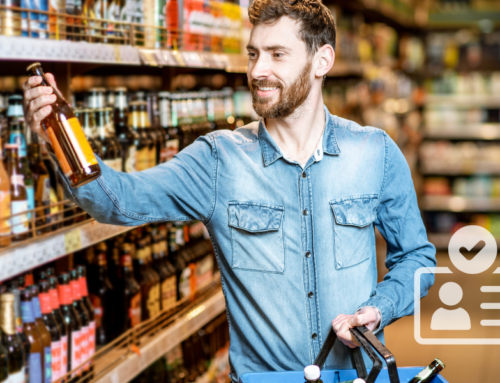Author
Tommy Chapman
Share
The RMS Guide to Becoming A Retailer, Part 4: Marketing your new retail business

In the fourth part of our how to be a retailer guide, we’re discussing the big M – Marketing. Marketing allows retailers to develop relationships with their customers and target demographics beyond the shop and beyond the sale. As the Harvard Business Review famously concluded: “Marketing is Everything”.
Marketing your new retail business can be a daunting task. How do you begin? Which channels are cost-effective? How do you drive the right people through the door?
Let’s begin by breaking it down.
Using Online Marketing to Drive Footfall
When launching a new retail business, getting initial footfall is crucial for ongoing success. There are a plethora of methods, both online and offline, that can enable you to drive some initial hype for your new retail space. There are ways to drive interest in your business at every price point. We’ll focus on covering methods that are straight forward and cost-effective.
Google My Business
There is an important aspect in SEO (search engine optimisation) that focuses on Name, Address and Phone Number (NAP). There may have been a business in your premises before you or you may share an address with another business. Making sure your business is acknowledged as the business at your address and is easily contactable is key.
Google My Business is, in many respects, an extension of a Google Maps listing. Once your address is verified you’ll list well in map-based results for your business name and potentially in related keywords e.g “flower shop Gretna”.
Google My Business has additional features such as the ability to post deals or events which show alongside your listing and the ability to upload videos.
It is a platform which can greatly increase the visibility of your company at no cost.
A Mobile Responsive Website
There are many ways to build a website and we’re not going to cover them in this piece but there are two important things to note: your website acts as a central point of authority for all your marketing and it is critical that it is mobile friendly. There are many local businesses you search for and the first result is one of their social media profiles: does that profile have their most up-to-date product list or menu? Does that profile have their opening hours and terms and conditions?
In this respect having a website is critical. It allows you to project your brand and your perspective but it can also aid in a lot of the administrative or legal overhead and allow for a customer service space (would you rather an irate customer used livechat on your website or posted on your Facebook wall?). We discussed in the previous chapter about the importance of e-commerce for diversifying revenue. A website can be a revenue generation platform in itself and add much more value to your business than social media. Having a social media profile is an easy option but having an e-commerce website can grow your business.
Having your website be mobile friendly is also incredibly important. Over 50% of internet traffic is now mobile and this is increasingly important if your local business relies on footfall. If someone is out and about and looking up a place to go then they are almost certainly using their smartphone.
Local Facebook Groups/Facebook Marketplace
When it comes to Facebook there are free and there are paid options for promotion. If you’re opening your retail space in a place that’s local to you then be sure to maximise goodwill from the local community. Local Facebook groups and the Facebook Marketplace tab are no stranger to people self-promoting. We’d also encourage you to invite your friends to like your Facebook page too.
Paid Facebook Advertising
When Facebook is encouraging local businesses to advertise on their platform, they often encourage you to advertise in a 5-mile radius of your business. While this will certainly mean your ads hit local people these targeting metrics are probably too vague. There may be certain postcodes in your area that you would rather target or people with certain interest types. Facebook’s targeting tool allows for advanced targeting – for example, you can target a woman aged 18-24 who went to Glasgow University and likes Love Island or you can target a man aged 65+ who likes Top Gear. The choice is all yours.
Other Social Media
Pinterest and Instagram are the home of visually appealing products and businesses. Meetup and Eventbrite allow people to meet in person and make a good alternative to Facebook Events if you want to run events in your space. LinkedIn is the ideal platform for B2B. Twitter can be quite a wild platform but is favoured by many businesses who use social media for customer service. As we move into 2019, we’re seeing fewer and fewer viable social media platforms which makes things easier for small businesses to manage.
Local Newspapers + Leafletting
While non-digital methods of marketing are harder to target and harder to prove return on they still exist for a reason. Leafletting certain postcodes to advertise your shop launch or product range is still popular and print design still has the ability to impress. Advertising in local newspapers can get your company in front of a highly local, generally older market if those are the people you’re trying to target.
Public Relations
Many local newspapers struggle to get positive stories. There’s no doubt that if you’re opening up an interesting new business you may well be approached by local journalists. However, it helps to be proactive. Get in touch with your local paper to make sure your launch gets covered. Potentially reaching out to influencers or local celebrities can help you reach a wider market more quickly (but usually at a cost).
Launch party/Launch Deal
Promote your new business with a launch. A launch party or deal can provide a strong incentive for curious passersby to check out your new business. Loyalty programmes or referral schemes are great ways to enhance your word of mouth marketing.

Shop Window and Pavement
Your shop window says a lot about you. If you’re opening a new business then it’s time to shout about it. Using an A-board (if your local authority permits) can be a helpful way of promoting a daily deal or a funny comment. Unless you’re opening a franchise, your brand and signage will be a serious investment that have the ability to make or break your business. Your storefront should have the ability to appeal to your key market but also entice passers-by and window shoppers.
Conclusions
At RMS, we believe in omni-channel marketing. New businesses trying to start up may struggle to find the right platform to target their desired audience. There are free ways to promote your business, paid ways to promote your business and there is no magic formula.
The main focus of marketing should be around identifying, empathising and communicating with your target market. Unless you have a large marketing budget, many aspects of marketing can become time intensive. In-store solutions that boost your word-of-mouth like loyalty programmes can be largely automated with the use of excellent EPOS systems.
At RMS, we’ve been specialising in user friendly EPOS systems for over 14 years. If you’re thinking of starting a retail space and need excellent EPOS, then please give us a call.
Key Terms
Share:
Sign up now for news and special offers!
Join our Newsletter
*We are collecting your email information in order to add you to our newsletter recipient list. You can unsubscribe from our communications at any time. You can do this by contacting us or by clicking the unsubscribe button on any of our communications with you.
You can find more information about the details we hold about you and the way we use them in our privacy policy, and you can access this here or we can send you a copy.




